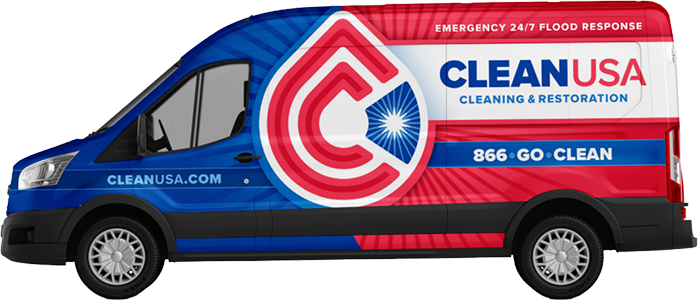Hidden dangers often lurk in the damp corners of our homes. They pose silent threats to our health and safety. Mold removal is crucial for a healthy living environment. It’s not just about a tough scrub. Eliminating mold needs a strategic plan for thorough mildew remediation and mold spore cleanup.
Knowledge is our best defense against this stealthy intruder. The first step is to wear protective gear like an N-95 respirator, gloves, and non-ventilated goggles. For surfaces with mold, clean meticulously. Use detergent, then mold-killing solutions. Replace porous materials that are beyond repair. For mold on wood, dish soap and vinegar can work. But sometimes, more aggressive methods may be needed.
It’s important to understand the process for removing mold. This knowledge helps deal with the current issue and prevent its return. We will explore how to eliminate mold from your home effectively. Join us for more details on mold eradication.
Key Takeaways
- Protect yourself with the proper gear such as N-95 respirators, long gloves, and safe goggles during mold spore cleanup.
- For effective mold removal, hard surfaces require scrubbing with detergent and water, while porous materials might need to be discarded.
- Employ mold-killing solutions for an accelerated mildew remediation process on resilient surfaces.
- Before repainting previously mold-infested areas, drying is essential to prevent future peeling.
- Tackling mold on wood may involve steps from simple cleaning to more involved methods such as sanding.
Understanding Mold and Health Risks
Mold is often found in homes and poses health risks of mold to people and pets. From mild allergies to severe breathing issues, health problems can vary. It’s important to know what mold looks and smells like, such as groups of black or green spots with a musty odor.
Types like Cladosporium, Aspergillus, and Stachybotrys, known as black mold, can be very harmful. These molds are risky, especially for those with weak immune systems. Recognizing mold exposure symptoms like coughing or skin rashes is key to keeping vulnerable people safe.
- Allergic reactions to mold are common. Symptoms include sneezing, a runny nose, red eyes, and a skin rash.
- Mold can make asthma worse and cause breathing issues.
- Exposure to a lot of mold over time can severely impact the immune system.
If you see signs of mold, dealing with it quickly is crucial. This can stop your home from being dangerous to live in. Homeowners must stay alert and take action against mold to protect their health and property.
The Essentials of Mold Prevention
To prevent mold, both reducing moisture and keeping up with home maintenance are key. Mold thrives in damp conditions, making it important to manage indoor humidity. This is vital for stopping mold before it starts.
Keeping indoor humidity level below 60 percent is critical.
Humidity control
is a key step in mold prevention. Ideally, aim for 30 to 50 percent. Using dehumidifiers is helpful, especially in basements or during humid seasons.
- Regular inspection and maintenance of plumbing to avoid leaks.
- Enhanced ventilation in kitchens, bathrooms, and laundry areas using exhaust fans.
- Use of air conditioners and dehumidifiers to maintain optimal indoor humidity.
- Proper insulation of cold surfaces like pipes to prevent condensation.
Reducing moisture is another important aspect to mold prevention. It’s crucial to dry wet areas promptly. For example, using a squeegee and leaving bathroom doors open after a shower prevents mold.
- Fix plumbing leaks quickly to lower the chance of mold.
- Regularly clear gutters to keep water away from the foundation.
- Hang up wet towels and clothing instead of piling them.
A clean and tidy home helps against mold. Focus on cleaning storage areas and cabinets. By cleaning these spots often, you lower the chance of mold.
By sticking to these tips, anyone can make their home less friendly to mold. This protects both their house and their health from mold dangers.
Mold Removal Strategies and Techniques
Effective mold remediation is key for a healthy home. A mix of detergent and water is great for scrubbing mold off hard surfaces. It gets rid of mold spores, making your home safer.
But, be extra careful with porous surfaces. When mold is deep, like in ceiling tiles, they might need replacing.
- Use special mold cleaners for a faster cleanup.
- On wood, start with dish soap and vinegar before sanding.
Always wear the right gear when cleaning mold. N-95 masks, gloves, and goggles keep you safe from harm. If you’re dealing with a lot of mold, it’s best to get pros. They can handle it better and safer.
Natural Solutions for Mold Remediation
Mold in the home is risky for health and can damage structures a lot. Using natural solutions to fight mold is effective and eco-friendly. Learn about vinegar mold cleaner, a bleach solution for mold, and more to keep your home mold-free.
- Vinegar Mold Cleaner: If you have mold on hard surfaces like counters, glass, or bathroom fixtures, undiluted white vinegar works well. Spray undiluted vinegar on the mold. Let it sit for an hour, then wash with water and dry well.
- Bleach Solution for Mold: To clean mold on items like tiles or bathtubs, use a bleach mixture. Mix a cup of bleach with a gallon of water. Apply, leave for 10 minutes, then rinse. Make sure the area is well-ventilated when using bleach.
- Natural Deterrents: Keep your home’s humidity low and the air flowing to stop mold. Use dehumidifiers and fans in places like kitchens and bathrooms. This helps lower moisture which mold loves.
For mold on soft items like fabrics, mix white vinegar, natural detergent, and cold water to clean. After, let it dry completely. Also, always wear gloves and a mask when dealing with moldy stuff to stay safe.
Exterior Mold: Prevention and Removal
Your home’s outside can grow mold too, affecting its look and structure. To keep things healthy and valuable, tackling outdoor mold removal, siding mold cleanup, anddeck mildew treatment is essential.
- Inspection: Check your siding, decks, and concrete often for mold signs. Catching it early can stop big trouble later.
- Cleaning Mix: Start with a mix of one part bleach to ten parts water for outdoor mold removal. It’s good at killing mold on solid surfaces.
- Scrubbing: Use rough brushes to get rid of stubborn mold, especially on siding. This is important for siding mold cleanup.
- Rinsing: After scrubbing, rinse well with a hose. This washes away any mold left and the cleaning mix.
- Vinegar Solution: Prevent mold’s return with a mix of water and vinegar. It’s an eco-friendly way to keep molds at bay.
- Pressure Washing: For a lot of mold, a pressure washer is your best bet. Use it for a deep clean and to cover big areas quickly in deck mildew treatment.
- Baking Soda Application: Once clean, spread a paste of baking soda and water. This helps stop mold from coming back.
Don’t ignore outside mold. It needs as much care as indoor mold. Following these steps in your regular home upkeep will make sure your outdoor areas stay nice and mold-free for a long time.
What to Do After Mold Removal
After you’ve removed the mold, it’s time for post-mold cleanup. The goal? Keep everyone safe and stop the mold from coming back. You need to know how to properly get rid of moldy stuff. Plus, learning how to wash clothes after they’ve been around mold is key.
- Disposal of Mold-Contaminated Materials: Things like used rags and protective clothing should be put in sealed bags right away. This stops any leftover mold spores from spreading.
- Cleaning and Drying the Space: Once you’ve cleaned away the mold, dry up the space well. Fans or open windows help by getting fresh air in. This reduces the moisture that mold loves.
- Handling Contaminated Clothing: Clothes that were near the mold need special attention. Wash them in hot water separately to make sure any spores are destroyed.
After getting rid of the mold, the cleanup doesn’t stop at just wiping things down. It’s crucial to make sure mold won’t grow back because of the same old issues. This might mean checking the humidity or fixing leaks for good.
- Be careful how you chuck out the cleaning stuff and materials you used on the mold. Make sure you toss them in a way that won’t harm the environment or health.
- Upgrading your ventilation and moisture control can also help keep mold away. It keeps the air moving and dry, which mold doesn’t like.
Keep up with these steps, and mold won’t easily return. This makes your home a better, safer place to be.
Conclusion
In the battle against mold, looking at the bigger picture is vital. It’s key to tackle the causes like high humidity and poor ventilation. This will help prevent mold from coming back. Keeping up with regular checks and cleanings is very important for a healthy home.
Knowing the types of mold and their dangers really helps. This info guides the right steps for cleaning and stopping mold. Safety is top priority when getting rid of mold, to protect yourself. Using both natural and store-bought cleaners gives you more ways to fight it off.
After mold removal, what you do next is crucial. Getting rid of moldy stuff right, making sure everything is dry, and staying alert keep your home safe. By following these steps, keeping a mold-free home is doable. It turns a big task into a success story.




